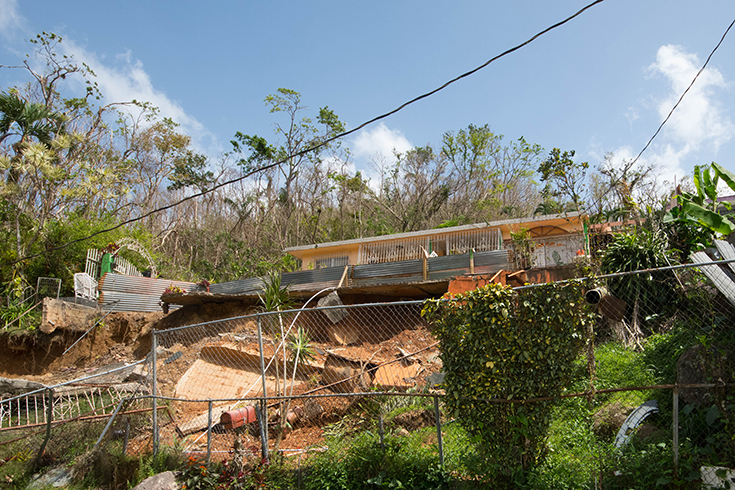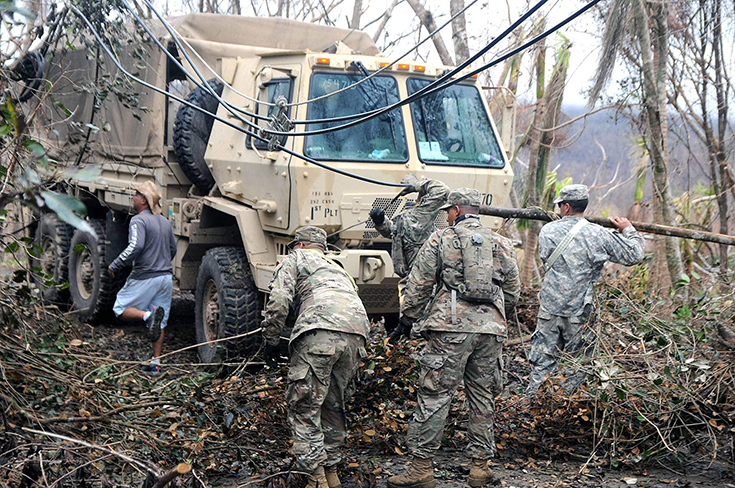Puerto Rico: The case for disaster preparedness
The ongoing rise in deaths in the aftermath of Hurricane Maria exposes the devastating consequences of inadequate planning for natural disasters and how miscommunication impedes relief efforts, says Anastasia Kyriacou.

The death toll that Hurricane Maria left in its wake continued to rise as communities struggled with the recovery (Cliff Estes/123rf)
The long-awaited independent investigation into the deadly storm that struck in September 2017, has revealed the revised death toll of Puerto Ricans to be now almost 50 times the previous estimate, making it one of the deadliest natural disasters in US history.
The most powerful storm to hit the region in 100 years was reported at the time to have killed 64 people in Puerto Rico. Six months following the disaster, a definitive study by George Washington University (GWU) established how deaths continued to rise to 2,975 people.
Why weren’t the numbers accurate?
Puerto Rico was an island already encumbered with broken infrastructure and bankruptcy of $120 billion before Hurricane Maria destroyed 80 per cent of its crops and afflicted an estimated $90 billion in damage. Hitting 3.4 million people, the storm caused the largest blackout in US history, with recurring power cuts ever since.
The poorest and most vulnerable Puerto Ricans faced the highest rates of mortality, with 45 per cent more likely to have been killed in the aftermath of the hurricane as a result of a lack of access to electricity, clean water and poor healthcare provision. Intermittent power cuts meant vital medical equipment could not be used, while diseases spread because sanitation systems went offline, and suicide rates spiked five months later as people struggled to cope with the recovery.
Inaccurate death counts were largely a result of doctors not using the appropriate Centres for Disease Control guidelines to count the number of deaths accurately. These guidelines would have allowed for classification of deaths attributable in the aftermath of the storm, as well as direct fatalities.
GWU’s findings also bring to light the lack of emergency response and disaster-communications preparations in place. Through interviewing Puerto Rico government agencies, the report deduced a failure to write or implement crisis and emergency risk communication plans at the time of the hurricane.
The report says that there were: “Ineffective communication contingency plans in place, resulting in limited public health and safety information reaching local communities post-hurricane.” Consequently, such miscommunication led to an ineffective response as it became difficult to know what the real needs of communities were.
It adds: “Key leader interview respondents perceived the death count to be much higher, and held viewpoints that government leadership was disconnected from the realities of Puerto Rican communities, that there was not transparency in reporting, that information was intentionally withheld to evade blame and that adequate systems were not in place to track the death count.
The Department of Health’s Office of Emergency Preparedness Response had an outdated plan that led leaders to prepare communities for catastrophic disaster inadequately. This meant the island was prepared for category 1 hurricanes, with Maria being category 5.

Citizen soldiers from the Puerto Rico Army National Guard, along with residents from the municipality of Cayey, clear roads after Hurricane Maria swept through the region, felling trees and power lines and cutting off the community (Puerto Rico Army National Guard Photo/staff Sgt Wilma Orozco Fanfan, 113thMPAD)
Moving forward
GWU’s report concludes with key recommendations including the fundamental need for preparedness with planning, transparency to strengthen informed decision-making and compassion towards individuals and community who are enduring crisis.
The report provides a number of key recommendations:
All jurisdictions, not just in the United States but also globally, should develop methods to assess total excess mortality after natural disasters rapidly and to provide that information to the public. Monitoring should look not only at overall rates of death but also for spikes in death rates in certain areas and within subpopulations, such as the elderly. This would enable public officials to identify populations at risk quickly and develop interventions aimed at protecting the most vulnerable citizens.
Puerto Rico specifically needs to staff public health functions within the Department of Health fully, including the Vital Statistics Registry and the Bureau of Forensic Sciences. In addition, the island must strengthen the co-ordination between the Vital Statistics Registry and the Bureau of Forensic Sciences, with the goal of creating a timely and accurate surveillance system. Given the nearly universal impact of the storm, including the professional staff in these departments and their families, outside disaster assistance agencies, including the US Centers for Disease Control and Prevention, need to provide aid and assistance to professional staff involved in natural disasters.
Puerto Rico needs to conduct after-action reviews and use those, along with the results of the study, to create a new crisis and emergency risk communication plan, one that is integrated with government agency and municipal plans, has community and stakeholder involvement and is aligned with the possibility of catastrophic disasters.
Additional research must be done to understand how the hurricane was involved in the excess deaths identified in the study. This would involve interviews of family members and others, as well as in-depth statistical analyses, to learn about the circumstances leading up to individual deaths. Such a study can provide clues that will aid in protecting vulnerable groups in the future.
“The lessons learned from this report and subsequent studies will help not just Puerto Rico, but other regions in the US and around the world that face the ongoing threat of hurricanes and other natural disasters,” said Lynn R. Goldman, Michael and Lori Milken Dean of Milken Institute SPH. “If enacted, the recommendations of this report could help save lives in Puerto Rico and beyond.”
Multi-level government failings
Moving beyond the GWU’s analysis of mortality after the storm, wider failings have also been observed in the post hurricane response. President Donald Trump was perceived to have responded so poorly in the light of Hurricane Maria that Puerto Ricans accused him of treating them as second-class citizens.
The island was due the same emergency response as any other part of America, but the response from the federal government to people in need was seen to be lacklustre, with notable imbalances in support compared to other hurricane aid efforts in Texas and Florida.
The Federal Emergency Management agency, FEMA, is said to have significantly underestimated the potential damage from Hurricane Maria and relied too heavily on local officials and private-sector bodies (click here for FEMA’s 2017 hurricane season after action report). Puerto Rico had no chance of managing the catastrophe on its own, owing to severely limited capacity, yet in the aftermath, the President Trump placed blame on San Juan’s leadership in moves that many interpreted as an attempt to evade his own government’s accountability.
The American government sent just 10,000 relief workers to Puerto Rico in comparison to 30,000 sent to Houston after Hurricane Harvey, and deployed 73 helicopters to Texas within six days, as opposed to 70 to the island after three weeks. Considering it took a week to respond to Puerto Rico, these figures may be unsurprising.
Recovery and reconstruction were said to have been hindered by the administration’s obstinacy in releasing enough financial support. The island was forced to engage in continuous fights with the federal government for sufficient disaster recovery loans. In response to a letter from FEMA clarifying its policy on the Community Disaster Loan programme, Héctor Figueroa, president of the Service Employees International Union’s Local 32BJ, said: “Despite being unable to carry out many vital functions, Puerto Rico is deemed by these federal agencies as not poor enough to qualify for emergency loans.”
Responding to GWU’s report, President Trump defended his administration’s response to Hurricane Maria, claiming: “They did a fantastic job.” At a news conference, Governor Ricardo Rosselló, who has been supportive of the US President, accepted the GWU report, which found that his administration was largely unprepared for the magnitude of the storm, and acknowledged he had “made mistakes.”
Regardless of how unprecedented the scale of a disaster may be; adequate preparation can prevent a bad situation from worsening. But in all of this, when humanitarian aid and resources are not easily available from the top-down in the aftermath of a disaster, countering responses of negligence and trivialisation with compassion is imperative to stimulate recovery from the bottom-up.
Anastasia Kyriacou works with AidEx
Anastasia Kyriacou, 06/09/2018